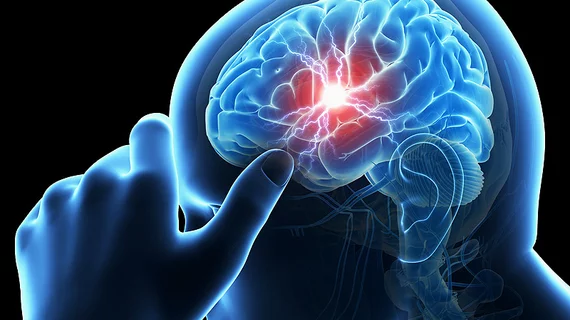Combining top CT stroke analyzers accurately predicts thrombectomy outcomes
Two different CT-based approaches can accurately predict which stroke patients require endovascular thrombectomy, but combining them offers even more insight, according to a recent study.
Those findings came by way of the multicenter Optimizing Patient Selection for Endovascular Treatment in Acute Ischemic Stroke (SELECT) study, published in the Annals of Neurology. Patients who received both CT and CT perfusion imaging had more favorable outcomes, potentially improving treatment for ischemic stroke—the fourth-leading cause of death worldwide.
Endovascular thrombectomy requires a physician to thread a device through a patient’s artery to remove a clot in a blood vessel. It’s been quite effective in improving outcomes up to 24 hours after onset in those with stroke. What’s less understood, however, is which imaging approach results in the best patient outcomes.
"Different imaging techniques are used to identify patients who may benefit from this (thrombectomy) treatment,” Amrou Sarraj, MD, with the University of Texas Health Science Center at Houston, said in a Jan. 22 statement. “However, how these imaging profiles correlate with each other and with the stroke outcomes is unknown.”
Sarraj et al. enrolled 361 patients in their phase 2 study; a number of them had favorable imaging results on both CT and CT perfusion, indicating they were eligible for thrombectomy. This population also was much more likely to receive this life-altering treatment. Nearly 60% of this group had higher 90-day functional independence rates after they recovered from stroke.
For comparison, when one modality recommended thrombectomy, but not the other, 38% of patients still regained functional independence., better than rates of those who did not undergo thrombectomy at all, the researchers noted.
And those who had an unfavorable result on CT perfusion, but favorable on non-contrast CT, had higher rates of intracranial hemorrhage and death after stroke. Groups who were not recommended for treatment by either modality had “very poor” outcomes.
"While best outcomes were observed in patients with a favorable profile on both imaging modalities, patients who had a favorable profile on at least one imaging modality also achieved reasonable outcomes," Sarraj noted.
Imaging is always a prerequisite to finding the location of the stroke-inducing clot. Simple, non-contrast CT is typically available in most hospitals, but CT perfusion is often only housed in advanced stroke centers, the authors wrote.
Going forward, Sarraj and colleagues will further investigate the safety of thrombectomy in patients with unfavorable profiles on one or both imaging modalities.

